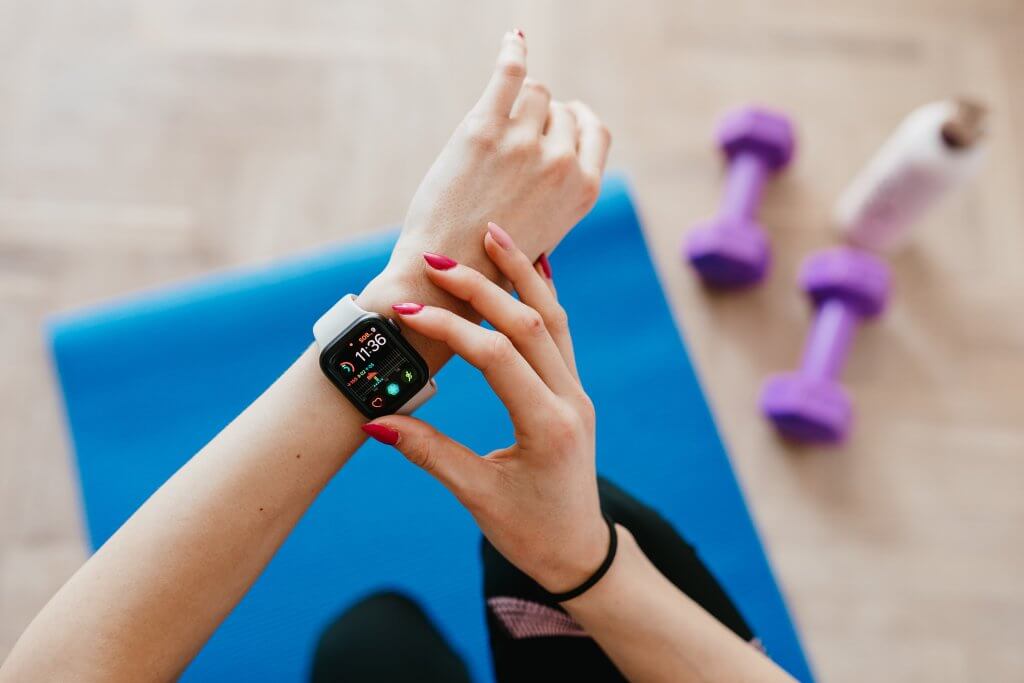Technology is seeping into every aspect of our lives. It impacts almost everything, from how we order food and groceries, to how we learn, entertain ourselves, keep fit, and focus on our wellness. In fact, a global digital overview estimated that over twelve trillion hours will be spent by humans using connected devices and services in 2023. The rise of digital technology has also brought more awareness of the significance of caring for one’s physical and mental health. Thanks to technological advancements, tracking and controlling one’s health and wellness has never been easier, which brings us to the concept of digital wellness programs.
What is Digital Wellness?
Digital wellness is the pursuit of wellness through technology.
Digital wellness is centered around making deliberate and considerate use of technology to improve one’s health in general. Setting healthy habits and limits is becoming more important as our reliance on digital gadgets and online platforms keeps increasing.
The Impact of Technology on Our Wellbeing
People who are “constant checkers,” meaning they check their emails, messages, and social media accounts, report higher stress levels, according to a study conducted by the American Psychological Association. Our mental health can be negatively impacted by the addictive dopamine cycle that is triggered by the instant gratification that notifications, “likes”, and messages provide through the various social media platforms available.

In addition, the typical sedentary lifestyle that revolves around screens isn’t good for our bodies. Neck pain, eye strain, and bad posture are just some of the physical issues that can result from staring at a screen for too long.
The Rise of Health Tech
However, technology has also made previously inaccessible information and resources more accessible. For example, relatively recent development of apps and devices, allow individuals to check their heartrate or oxygen saturation levels instantly.
The wellness industry has been profoundly affected by the advent of digital health. Many resources have emerged in recent years to empower individuals to manage their health and wellness. One big example is wearable devices. There are countless devices available currently that track activity levels and sleep patterns. In addition, there is no shortage of apps aiming to improve mental health by offering guided meditations and stress-reducing strategies.
Why Do We Need Digital Wellness?
The goal of digital wellness is to create technology that encourages healthy use of technology and actively helps the user maintain a healthy lifestyle.
In a corporate setting, digital wellness takes on an even more essential role as employees essentially rely on tech and gadgets to do their work. Overuse of technology can have detrimental impacts on employees who disregard digital wellness. They may experience elevated levels of anxiety and stress due to this reliance. Workers who are emotionally and physically exhausted are less productive and more prone to health problems.
Digital wellness not only incorporates adding digital tools and elements into a wellness program but also places boundaries on technology in order to promote balance and reduce unhealthy technology habits.
Holistic digital wellness programs that focus on all six pillars of wellness — physical, mental and emotional, occupational, financial, social, and nutritional — can help employees live better lives both at work and outside of it.

When digital health practices are adopted, employees can stay focused on their work with less fatigue and distractions.
10 Digital Elements to Enhance Your Wellness Program
Both onsite and virtual wellness programs can help employees have balanced and productive lives inside and out of the workplace. The following are just a few examples that illustrate how digital-related elements can help achieve holistic wellness.
1. Wellness Workshops
There was a time when people had to gather at a specified physical location and a pre-determined time in order to attend a workshop. With technology, people can now attend virtual workshops at their own time and pace. The following are some of the most popular topics of wellness workshops:
A. Mindful Technology Use
Technology isn’t all that bad. In fact, it has been vital in ensuring life is more convenient. However, some may spend the majority of their waking time just tinkering with technology. Adults in their 20s are on their phones for close to 30 hours every week. Imagine if these hours were spent on developing useful skills, exploring hobbies or other more productive activities.
Mindful technology use isn’t about cutting off technology in your life completely. Instead, it is about leveraging technology for practical uses. Cut out technology that pulls from your energy and brain space. Stop “doom scrolling” and take back control. Do away with wasted technology, such as apps that serve essentially no purpose or benefit to you and your personal and professional life.
B. Managing Screen Time
The key to a successful screen time wellness webinar is to clearly layout the facts and let the individual self-govern. Managing screen time is about each person learning when to use technology. (And when to NOT use technology.) More and more companies and organizations are creating or adopting acceptable use policies for company devices. Perhaps during a wellness seminar on managing screen time, individuals create a personal “Acceptable Use Policy” for themselves to help guide and govern their personal screen time.
A good rule of thumb, if you have to question whether it is an appropriate time to be using technology via your screen of choice (i.e. at the dinner table, middle of the night, while at work, driving, etc.) the answer is probably that you should not be using it.
There is a time and a place for technology and screens-but it does not need to be all the time and every place.
C. Maintaining a Healthy Work-Life Balance
Another quite popular wellness workshop topic is exploring how to maintain a healthy work-life balance. Whether the workshop you choose to attend is specifically about how to achieve work-life balance or not, be sure that whatever workshop you are attending is helping add to your energy tank and filling your bucket.

No two individuals have the same lives outside of work. If your company decides to choose maintaining a healthy work-life balance as a wellness topic, ensure you are providing excellent resources, examples and actionable items. The last thing an individual wants is to attend the workshop in hopes of finally achieving balance only to find they have no new information and 30 minutes less to accomplish all that is required of them.
D. Balanced Social Media Use
There are 4.8 billion social media users worldwide. Individuals are now accepting the fact that too much time spent on social media can be damaging to our mental health. Some people may feel the pressure of achieving what others are bragging about on social media. Others may experience envy. Social media can be good, but only when you know how to balance its use. For this, and many other reasons, balanced social media use is another buzzing topic for wellness webinars and workshops.
2. Tech-Free Break Zones
In the workplace, people are usually on their desktops or laptops. When on a break from work, they tend to be on their phones. According to a study, the average person has about 80 apps on their smartphones. While many apps were developed make every day tasks easier they still require the user to view and soak up even more screen time.
A tech-free break zone is warranted among people who spend a lot of time with technology for work. The zone can be a place where people eat, draw, or talk but never be on their phones.
3. Mindfulness and Meditation Programs
Mindfulness and meditation are sometimes used interchangeably, but they are not the same. Mindfulness is awareness, while meditation is the practice of reaching awareness. You can find an online wellness program that can help you develop mindfulness through meditation. A variety of apps can also help achieve this state.

Companies can also establish mindfulness and meditation programs in the workplace so people can access them easily. It is also more fun to join an activity with other people. Meditation can help people achieve increased wellness, primarily mental and emotional wellness. To do this, companies can hire experts to lead mindful and meditation programs. Using online wellness programs is another great option.
4. Digital Detox Challenges
The name itself may sound daunting, but it can be done. The company can even sweeten the pot by offering a reward to people who can do the digital detox challenge.
Many people would say they can’t live without their phones. The truth is that smartphones are also the cause of many stressors in one’s life. Spending even just a limited time away from a tech device can do wonders for one’s mental and emotional well-being.
What do you do without gadgets? Anything! Avoiding technology gives individuals more opportunities to talk and interact with each other. Some may also channel their creativity through drawing, painting, crafting, or other practical activities.
5. Health and Fitness App Subscriptions
Everyone should have a fitness app subscription. Fitness apps are a $5.35 billion industry and they are convenient and usually leave a positive psychological effect on users.
For example, many apps track a person’s steps. You don’t have to do anything special–you just walk, and the app, which can be on your watch or phone, will automatically count your steps.
That is just one example of a health and fitness app subscription. There are hundreds of digital wellness programs in app forms, and it’s easy to choose the one that best fits your needs. Variety and ease of use are the main advantages of subscriptions because people can be flexible about their goals and when they plan to follow the fitness activities on the app.

6. Peer or Individual Wellness Challenges
Having wellness challenges can be a great way to achieve holistic wellness among friends and co-workers. Being competitive is fun. When The Biggest Loser, a reality show where contestants compete to lose the most weight, was on the air, many workplaces established similar contests. Instead of having experts and training equipment like the show, workers would have to work on losing weight by themselves.
However, challenges don’t always have to be in the form of contests. Some challenges can just be a call for people to be more fit. The following are some wellness challenges that can be completed individually:
- Walk or bike to work
- Take the stairs instead of the elevator
- Drink more water
- Eat healthy
- Start a physical hobby
7. Flexible Work Arrangements
Flexible work arrangements were almost non-existent before the pandemic hit. However, the pandemic proved that such arrangements work for selected industries. Flexible work arrangements can do so much for a person’s well-being. People living with families can have more quality time with them, which is great for their social, mental, and emotional well-being.
Flexible work arrangements also give people a chance to have time for physical wellness activities. The time used to travel to and from work could now be utilized for prepping healthy meals, working out or finding better work life balance.
8. Ergonomic Awareness Efforts
Too much time spent on technology could result in several health issues. You may develop eyestrain from looking at the screen for hours. Any underlying sight issues may be exacerbated with longer screen time. You may also develop terrible posture from using the laptop too much or from looking down at your phone for hours.
To address this, you can adopt digital wellness programs that include elements to help you develop better posture and better screen-time habits. For example, the American Academy of Ophthalmology recommended the 20-20-20 rule for screen time, which is the practice of taking a break from your gadget after 20 minutes to look at something 20 feet away for 20 seconds.
Offices should promote ergonomics in the workplace, or at a minimum encourage employees to check online programs that promote better gadget-viewing methods.
9. Employee Assistance Programs
Each person is different, so generic programs may not work for everybody. Employee Assistance Programs (EAP) will help individuals achieve their wellness goals through individual assessments, counseling, and referrals. The assistance programs are mostly geared toward people with mental and emotional health issues, whether these are work-related or personal.
Setting up an EAP program can be a long-term benefit for an organization. It is confidential, so there is no stigma attached to it. The program cannot solve problems, but it can help lead employees to the proper channels to deal with their issues.

10. Digital Wellness Resources
Something as simple as a digital wellness resource library could help people with their wellness endeavors. Individuals can browse through the library to find digital wellness programs or resources that could help encourage and push them to develop their physical, mental and emotional, financial, occupational, nutritional, and social wellness.
Conclusion
We are living in a digital world, and there is no going back. Since we can’t turn our backs on digitization, you might as well adapt policies that can help people achieve holistic wellness, whether at home or in the workplace.
Implementing digital wellness programs can help individuals develop healthy well-being in all aspects of life–physical, mental, emotional, and social, among others.